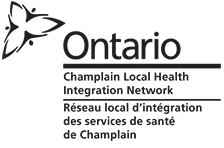
What are Opioids?
Opioids are a group of similar medications that are used to help with pain.
There are different types of opioids, with different names for example, Percocet®, OxyContin®, Tylenol® No. 2, Tramacet®.
Opioids are used to improve your ability to be active and reduce pain.
You and your doctor will set goals and ensure the medication is effective in achieving the goals, e.g. improving your ability to do the things you did before pain prevented you.
If you seem to benefit from the pain medication, your doctor will see you for follow-up visits to assess pain relief, any adverse effects, and your ability to meet your set activity goals.
Opioids in certain individuals may cause side effects such as:
- Nausea (28% of patients report it),
- Constipation (26%),
- Drowsiness (24%), dizziness (18%),
- Dry-skin/itching (15%), and
- Vomiting (15%).
Although there may be side effects from opioids, the good news is that your doctor can reduce or prevent these side effects by:
- Slowly increasing the dose of the drug
- Using anti-nausea drugs and bowel stimulants.
Some people are at risk of getting addicted to their opioids. Addiction means that a person uses the drug to “get high,” and cannot control the urge to take the drug.
Your doctor will ask you questions and discuss any concerns with you about your possibility of developing addiction.
The good news is that most patients do not “get high” from taking opioids, and addiction is unlikely if your risk for addiction is low. However, you may be at a higher risk if you have had problems in the past with addiction to other drugs or alcohol.
-
Do take the medication as your doctor prescribed it.
-
Do have only one doctor that is prescribing for you. Don’t obtain this medication from another doctor unless both are aware that you have two prescriptions for opioids.
-
Do provide a urine sample if you are asked. If you are asked to provide a drug sample, it is to show all the drugs you are taking and make sure that a combination of medications is not placing you at risk.
-
Do keep your prescriptions safe and use the medications as instructed. Your doctor will give you a prescription for the amount of medication that will last until your next appointment. If you run out too soon or lose your prescription your doctor will not likely provide another. If you cannot follow these precautions it may not be safe for your doctor to prescribe opioid medication for you.
-
Do keep medications securely stored at home.
-
Don’t drive while your dose is being gradually increased or if the medication is making you sleepy or feel confused.
-
Don't share your medication with others. Your medication that your doctor prescribes for you is something that your body has gotten use to over time. However, if you share your medication with someone else, that person could have a serious reaction, including death! So don’t give your medication to anyone else — it is illegal and could harm them.
-
Don’t take opioids from someone else, for the same reasons as above. Someone else's medications have been carefully increased over time, with their doctor, watching carefully for side effects. If you suddenly start taking someone else's medications, it could be extremely dangerous.
-
Don't keep your medications in the medicine cabinet. Research has shown that others, particularly teenagers might help themselves to these drugs.
-
Don’t stop taking your medication suddenly. If you suddenly stop, you may experience a withdrawal reaction. Withdrawal symptoms do not mean you are addicted — just that you stopped the drug too quickly — your doctor will tell you how to slowly stop this medication so you won’t have this. Withdrawal is not dangerous but it can be very uncomfortable.
-
Do be aware of opioid withdrawal symptoms such as symptoms that are flu-like, e.g. nausea, diarrhea, and chills.
-
Do let your doctor know if you stop taking your medications for more than a few days. If you interrupt your medication schedule for three days or more for any reason, do not resume taking it without consulting a doctor.
When used appropriately, opioids can be very helpful. However, if you take too much, it may lead to an overdose. Overdose from opioids is uncommon, but you and your family should be aware of the signs.
-
Do make sure that you and family members are aware of the following signs of an overdose
-
Slurred or drawling speech
-
Becoming upset or crying easily
-
Poor balance
-
Nodding off” during conversation or activity
-
Overdose means thinking and breathing slows down — this could result in brain damage, trauma, and death.
-
-
Do contact a doctor if you notice any of the above signs!
-
Don't take alcohol or sedating drugs if you are taking opioids as the mixture can increase your risk of overdose.
The National Pain Centre at McMaster University is a rich source of reliable, comprehensive information for patients and professionals.
Useful handouts for patients include the following:
-
Are you taking opioids (painkillers) for your pain? (English)
http://nationalpaincentre.mcmaster.ca/documents/AreYouTakingOpioidsEnglishJan2014.pdf
-
Are you taking opioids (painkillers) for your pain? (French)
http://nationalpaincentre.mcmaster.ca/documents/AreYouTakingOpioidsFrenchApr2014.pdf
Written by the eMentalHealth.ca Team, based on source materials from the Canadian Guideline for Safe and Effective Use of Opioids for Chronic Non-Cancer Pain. Special thanks to the support of Dr. Norm Buckley and the National Pain Centre, without whose support this document would not be possible.
Canadian Guideline for Safe and Effective Use of Opioids for Chronic Non-Cancer Pain. Canada: National Opioid Use Guideline Group (NOUGG); 2010. Original version available from: http://nationalpaincentre.mcmaster.ca/opioid/
Information in this pamphlet is offered ‘as is' and is meant only to provide general information that supplements, but does not replace the information from your health provider. Always contact a qualified health professional for further information in your specific situation or circumstance.
You are free to copy and distribute this material in its entirety as long as 1) this material is not used in any way that suggests we endorse you or your use of the material, 2) this material is not used for commercial purposes (non-commercial), 3) this material is not altered in any way (no derivative works). View full license at http://creativecommons.org/licenses/by-nc-nd/2.5/ca/
















